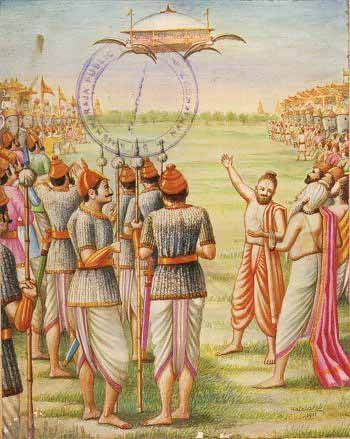

Evidence of unexplained ancient aircraft can be found across the planet especially in areas where major civilizations once thrived. Physical evidence of alien intervention in human history is undeniable. Ancient Astronaut Theory seeks to explain alien presence in the past linked with Ancient Aircraft and purported landing strips, especially in areas like India (Vimanas), Egypt, and Mesoamerica. Pictographs and megalithic monuments describe human interaction with these entities, allowing those in our timeline to piece together what happened in the past that shapes out destiny today as humanity evolves beyond this consciousness simulation.
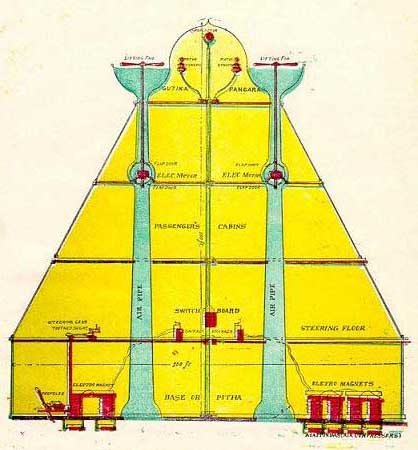
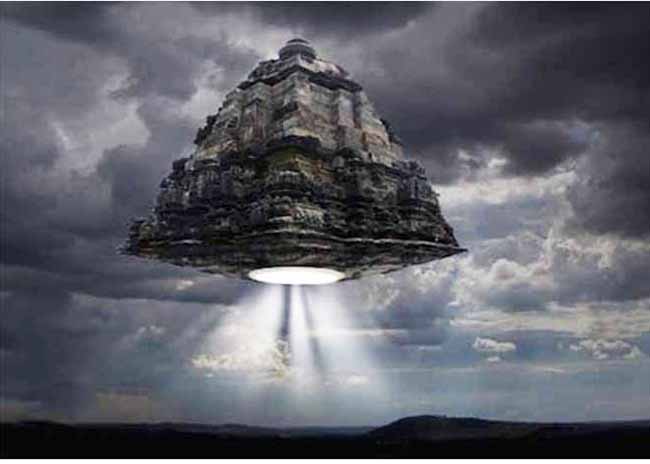
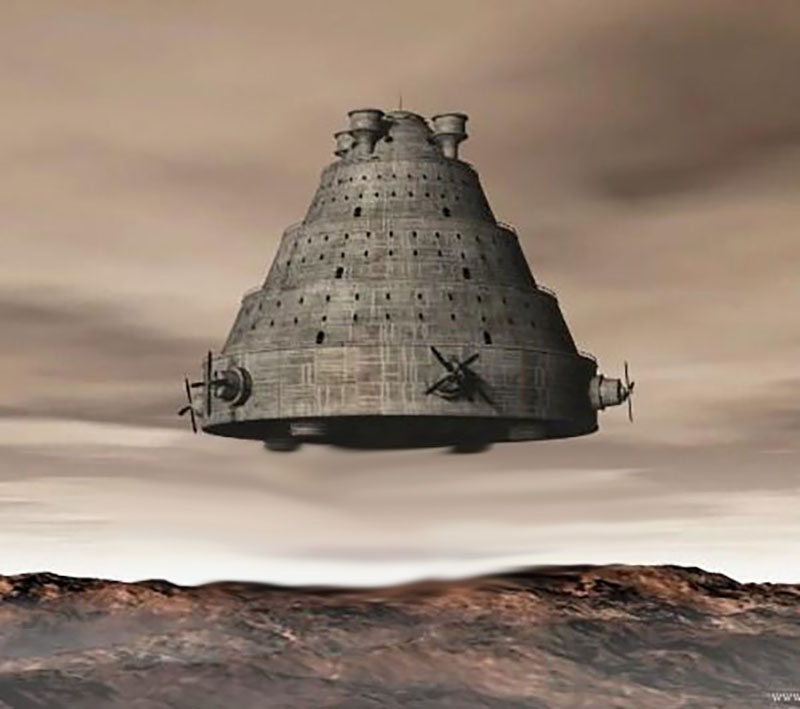
Descriptions in the Vedas and later Indian literature detail vimanas of various shapes and sizes:
The "agnihotra-vimana" with two engines. (Agni means fire in Sanskrit.)
The "gaja-vimana" with more engines. (Gaja means elephant in Sanskrit.)
Other types named after the kingfisher, ibis, and other animals.
The word comes from Sanskrit and seems to be vi-mana = 'apart' or 'having been measured". The word also means a part of a Hindu temple. The meaning of the word likely changed in this sequence:�
Temple A god's palace In the Ramayana: the demon-lord Ravana's flying palace called Pushpaka. In later Indian writings: other flying vehicles, and sometimes as a poetic word for ordinary ground vehicles.
�In some modern Indian languages, the word vimana means ordinary real aircraft.
The Buddhist book Vimanavatthu (Pali for "Vimana Stories") uses the word "vimana" with a different meaning: "a small piece of text used as the inspiration for a Buddhist sermon".
Sanskrit texts are filled with references to gods who fought battles in the sky using vimanas equipped with weapons as deadly as any we can deploy in these more enlightened times.
In the Ramayana there is a passage in the Ramayana which reads:
"Pushpaka" is Sanskrit for "flowery". It is the first flying vimana mentioned in Hindu mythology (as distinct from gods' flying horse-drawn chariots). It is also called Pushpaka Vimana.
The special characteristic of this vehicle is, "What ever may be the number of people sitting in it, always there will be one more seat vacant i.e., If N people sit, There will be (N+1) seats". It was basically a vehicle that could soar the skies for long distances. It shows that even in ancient times, people were curious about flight and might have tried to design flying vehicles.
Pushpaka was originally made by Maya for Kubera, the God of wealth, but was later stolen, along with Lanka, by his half-brother, the demon king Ravana.
The core epic of the Mahabharata mentions no vimanas, but vimanas often occur in the large amount of matter which was added to the Mahabharata corpus later. One example is that the Asura Maya had a Vimana measuring twelve cubits in circumference, with four strong wheels.
The Mahabharata is a veritable gold mine of information relating to conflicts between gods who are said to have settled their differences apparently using weapons as lethal as those we have now. Apart from 'blazing missiles', the poem records the use of other deadly weapons. 'Indra's Dart' (Indravajra) operated via a circular 'reflector'. When switched on, it produced a 'shaft of light' which, when focused on any target, immediately 'consumed it with its power'.
In one exchange, the hero, Krishna, is pursuing his enemy, Salva, in the sky, when Salva's Vimana, the Saubha, is made invisible in some way. Undeterred, Krishna immediately fires off a special weapon: "I quickly laid on an arrow, which killed by seeking out sound". Many other terrible weapons are described, quite matter-of-factly, in the Mahabharata, but the most fearsome of all is the one used against the Vrishis. The narrative records:
It is important to note, that these kinds of records are not isolated. They can be cross-correlated with similar reports in other ancient civilizations. The after-affects of this Iron Thunderbolt have an ominously recognizable ring. Apparently, those killed by it were said to be so burnt that their corpses were unidentifiable. The survivors fared little better, as it caused their hair and nails to fall out.
Perhaps the most disturbing and challenging, information about these allegedly mythical Vimanas in the ancient records is that there are some matter-of-fact records, describing how to build one. In their way, the instructions are quite precise.
The Mahabharata also tells of the awesome destructiveness of the war: "... (the weapon was) a single projectile charged with all the power of the Universe. An incandescent column of smoke and flame as bright as the thousand suns rose in all its splendor... An iron thunderbolt, a gigantic messenger of death, which reduced to ashes the entire race of the Vrishnis and the Andhakas.... the corpses were so burned as to be unrecognizable. The hair and nails fell out; pottery broke without apparent cause, and the birds turned white.... after a few hours all foodstuffs were infected.... to escape from this fire, the soldiers threw themselves in streams to wash themselves and their equipment..." Some say that the Mahabharata is describing an atomic war. References like this one are not isolated; but battles, using a fantastic array of weapons and aerial vehicles are common in all the epic Indian books. One even describes a Vimana-Vailix battle on the Moon! The above section very accurately describes what an atomic explosion would look like and the effects of the radioactivity on the population. Jumping into water is the only respite.
In the Sanskrit Samarangana Sutradhara (Literally, "controller of the battlefield"), it is written:
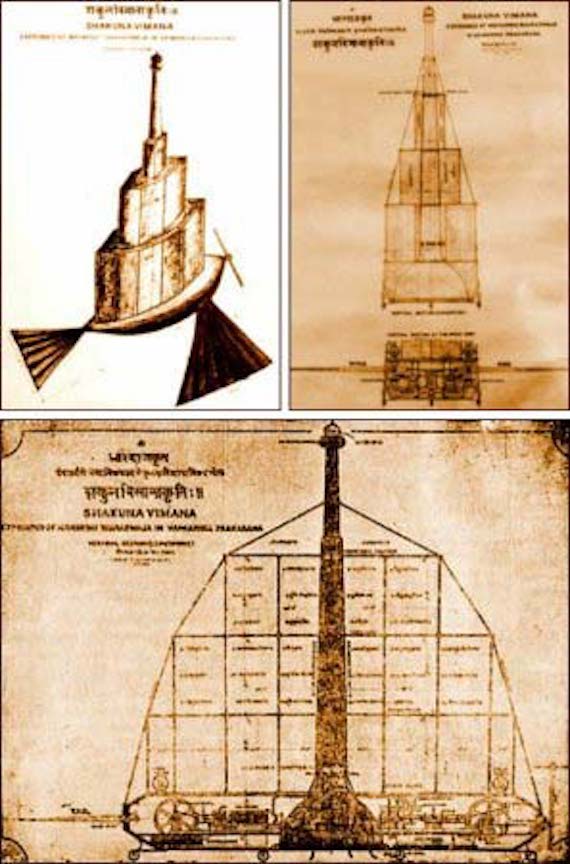
The Mysterious Indian Manuscript of Ancient Flying Machines
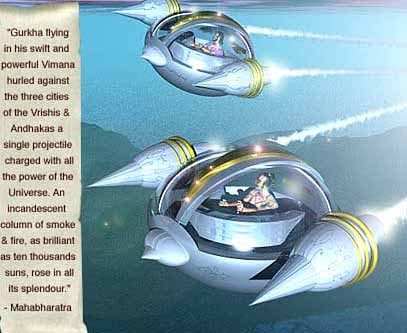
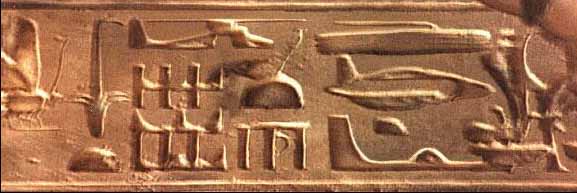
Other Ancient Aircraft